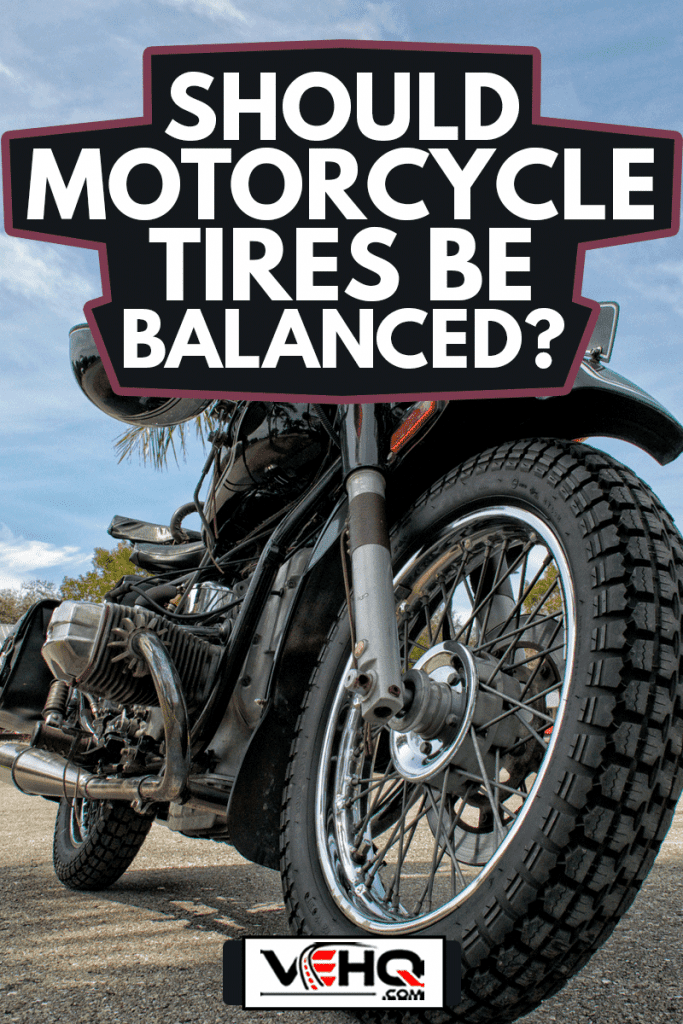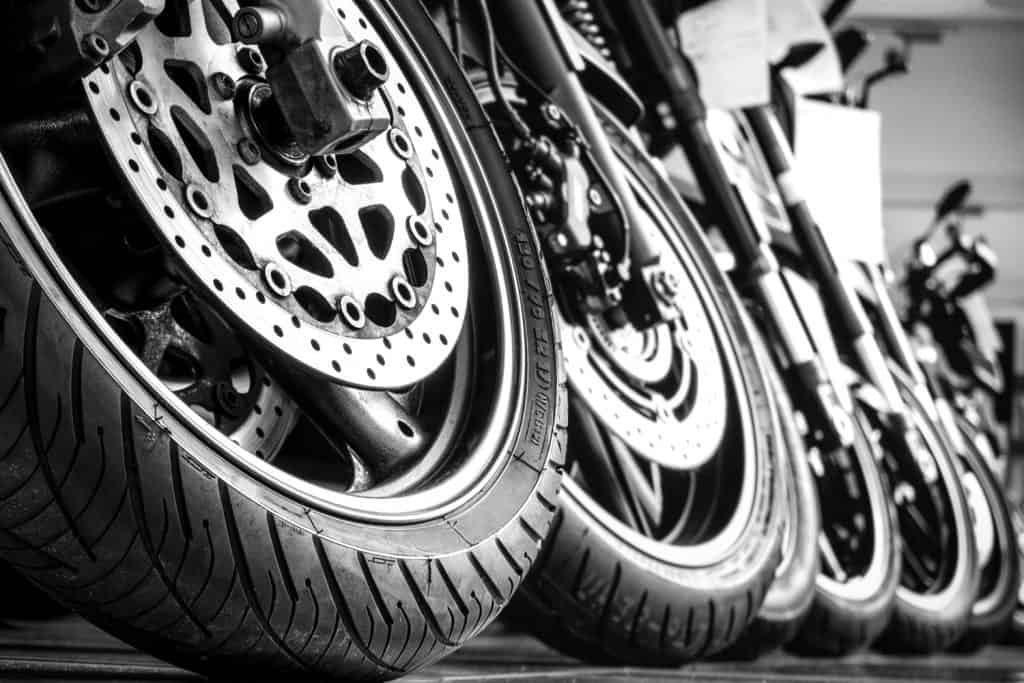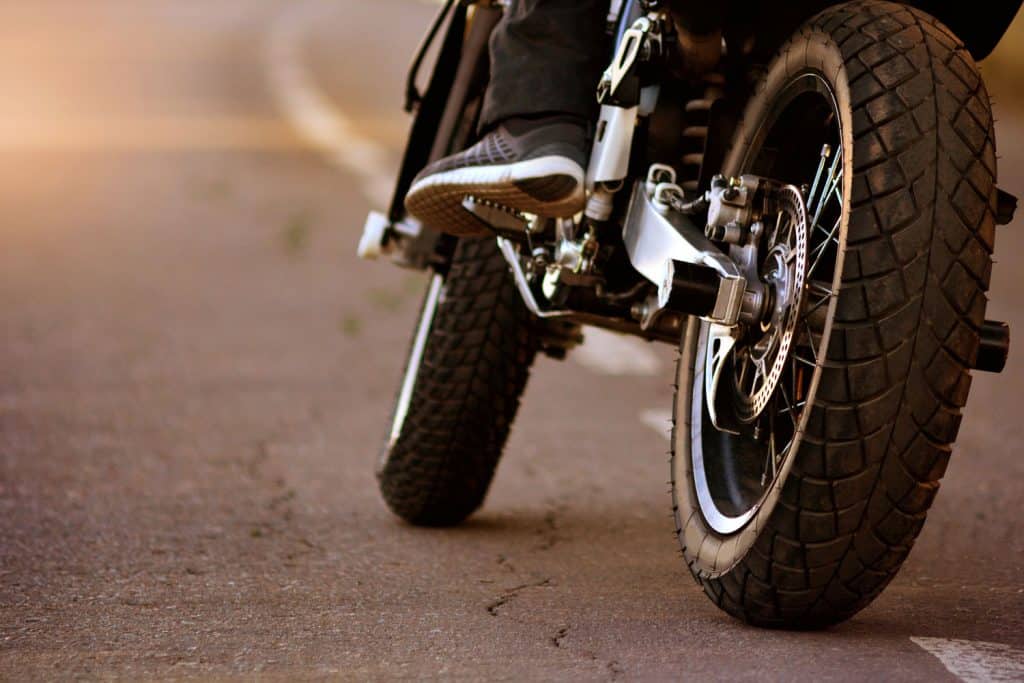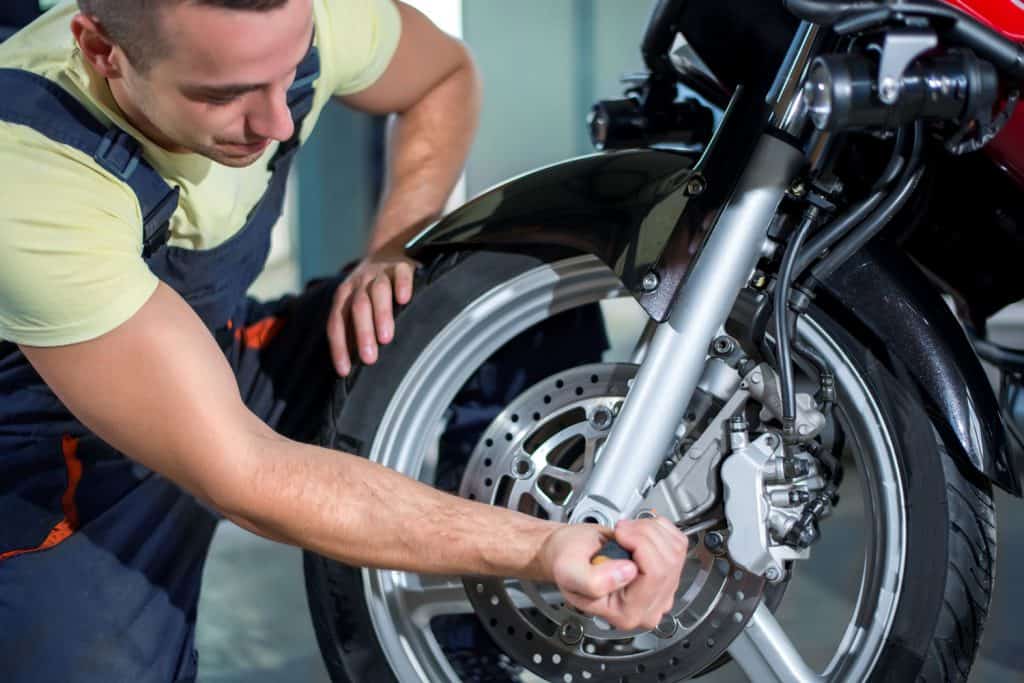Having balanced tires on your vehicle is an important feature both for safety reasons and also comfort. An unbalanced set of wheels can lead to a shaky and uncomfortable ride. So should you balance the tires on your motorcycle? And how does one balance a fresh set of tires on their motorcycle to begin with? We've found the best methods for you to keep your motorcycle tires in check.
You need to balance your motorcycle wheels for safety's sake. You will feel the wobbly steering and vibrations symptomatic of unbalanced tires. Unbalanced tires can also cause uneven wear on tire treads and loosen fasteners or wear out wheel spindles. Using a wheel balancer is the best way to go about balancing your tires.
You can balance your tires yourself, but the process is a little bit involved. Thankfully, we've gone into further detail just on how to do this in the article down below. Keep reading to learn why balancing your motorcycle wheels is important and how to get it done.

How to know your tires need balancing

With all the dangers that come with unbalanced motorcycle tires, it's good to know that they make themselves rather apparent. Unbalanced tires will cause your motorcycle ride to feel bumpy and uncomfortable. Your wheels will vibrate as if you were riding over an uneven road, and you'll begin to notice unusual patterns of wear. At this point, you'll need to look into balancing your tires.
What causes tires to go out of balance?
Balanced tires have a uniform distribution of the weight of the tire and wheel around the axle. While riding on the road, the distribution of your weight is constantly shifting. As you continue to use your motorcycle, this constant shifting of weight causes your wheels to go out of balance over time.
Wear and tear through constant use and subjugation to potholes and rough concrete can also contribute to imbalance over time.
How to balance your tires
Balancing your tires is a fairly simple process that requires a few tools if you want to do it yourself. The most important among these is a good motorcycle wheel balancer.
You'll also need some counterweights as well to complete the process. Once you have those, you're good to start the process of balancing your tires.
Mount your wheel on your balancing stand
Start by making sure your static balancer is level on the ground. Remove one of the centering cones from the axle so that you can slide the axle through the wheel's center.
Reattach the centering cone and set the wheel on the balancer, tightening the screws located on both centering cones. It is important to make sure that both cones fit inside the axle sleeve, or else the wheel will not be centered on the shaft, which can affect its balance.
View bike wheel balancer on Amazon.
Degrease the rim
Thoroughly wipe down the rim with a quality degreaser. This serves two important purposes:
- Firstly, you don't want any gobs of grease weighing down your balance.
- Secondly, if you're using adhesive wheel weights, you're going to want to make sure they stick on well.
Make sure to remove any previously used weights from previous balances as well, if needed.
Find the heaviest and lightest parts of the tire
Gently spin the tire, letting it stop on its own. Gravity will cause the tire to stop spinning with its heaviest portion at the lowest point. Take a piece of masking tape and mark this point on the tire.
Obviously, with the heaviest point of the tire at the lowest point, the lightest part of the tire will be at the top. Therefore you will need to add weights to the top of the tire, directly across from where you marked with tape.
You have a couple of options for the best counterweights, depending on the type of rim you're using. If using a non-spoked wheel, your best option is likely the adhesive-backed weights that stick to the rim. They are inexpensive and easy to spread out along the tire.
Using spoked rims, you also have the option of spoked weights held to the spoke with a set screw. These are more expensive than the adhesive-backed weights, but they are reusable and less likely to come off.
Add a few ounces of these weights to the lightest portion of the tire. If using the common adhesive-backed weights, you can use tape to keep them in place temporarily. Spoke wheel weights come in various sizes and can be stacked if need be.
Re-rotate the tire, and adjust as needed
Rotate the tire until the lightest and the heaviest portions are located equidistant from the work surface and gently release the wheel. Again, it should naturally rotate to a position where the heaviest portion of the wheel rests at the bottom.
If this portion of the wheel is now where you added weights, remove some and attempt it again. If need be, add weights to the lightest portion at the top. Repeat this step as needed.
A properly balanced tire should stay still when released as there are no heavier and lighter spots to rotate the wheel around. When you think you have the proper balance, test this by rotating the tire (using your tape as a guide) at a 3:00, 6:00, 9:00 and 12:00 position. Continue adjusting until the wheel no longer rotates on its own.
Finish with your weights
If you are using spoke weights, you're now finished with the process and can remove your tire from the wheel balancer. If you are using adhesive-backed weights, use a piece of tape to mark the edge of the weights.
Then remove whatever is temporarily holding the weights in place. Remove the backing paper from the weights, and then press them firmly onto the rim to hold them in place. A balanced tire should stay still when released no matter what position it's in. Now you can remount your tires and ride safely.
Read now on VEHQ: Motorcycle Safety Gear Checklist [7 Must-Haves!]
How many weights should be on a tire?
While there is no agreed-upon hard limit when it comes to weights, the general consensus is that if it takes more than 1% of assembly weight to bring the tire into balance, you might have an issue.
The number of weights is less important than the comparative weight to tire numbers. You can see a good breakdown of some sample numbers at the link provided.
Are balance beads good for motorcycles?

Balance beads are another way to gain a smooth ride from your motorcycle tires and offer some pros to the weight method. They are placed inside the tire, which means they don't risk falling off like weights, offering a much cleaner look.
Balance beads are placed inside your tire and disperse evenly when the tire is in motion, taking some of the guesswork out of self-balancing. If working with weights and balancing yourself doesn't sound all that appealing, balance beads are a good alternative.
Buy tire balancing beads on Amazon.
How many ounces does it take to balance a tire?
There is, unfortunately, no magic number that will solve every tire's imbalance issue with 100% efficiency. Tires and rims come in a variety of sizes, and these affect many different aspects of the balancing process, including the weights.
Reaching a state of balance on your balancing stand can take a little trial and error, but the important thing is to try not to exceed the 1% of assembly weight suggested above. If you're going to use balancing beads, there are helpful charts you can use online to eyeball how many beads to put in your tires.
How much weight is too much to balance a front motorcycle tire?

According to the Harley Davidson owners manual, your motorcycle should not have any more than 3.5oz of weights applied to the rim of any one wheel at any time. Keep in mind this is the high end, as well. If, for any reason, you feel unsure about the weight on your tires, contact your local garage or dealer for help with balancing and weights.
Read now on VEHQ: How to paint a motorcycle.
In Closing
The process of balancing your tires is a bit of an involved one. It's a wholly necessary one that increases both your comfort and safety immensely. You can achieve the balancing process in your own garage with just a few tools and some know-how. We hope this guide helped you achieve the latter so you can keep your ride smooth and yourself safe for many rides to come.


